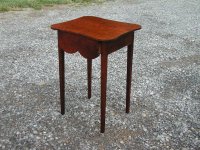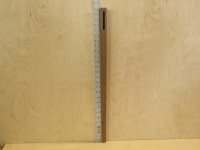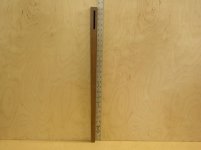Hi Jeff,
I think this is a very interesting idea and intend to follow your progress and observations as you move forward. In the meantime, I have a couple of questions and a thought, or two, which I hope will be of some general interest.
What, if anything, do you know about the origins of this little table, in terms of when and where it was made? My impression is that it would likely be considered a "vernacular" piece, so I'm assuming it was likely not made in one of the design/fashion centers and *may* be somewhat later than we might otherwise think. I presume you intend to pass along construction features, but I would also be interested in your observations concerning the level of workmanship, appropriateness of construction details, etc. Possibly fleshed out with detail photos if that wouldn't be too much trouble.
I hope this would be of some general interest, as I feel that such information really helps flesh out our ideas concerning milieu from which these pieces emerged.
Several years ago I helped a friend do some very minor repairs on a fairly plain vernacular cherry chest of drawers which, style-wise, would have been characterized as "empire." Not really to my taste, but executed in a neat and workmanlike manner, with hand-cut dovetails and above average construction details. Further, the non-show surfaces all exhibited tool marks which clearly indicated that even the stock preparation had been done using hand tools. When we got all the drawers out and had the piece turned on its back, we discovered that it was signed and dated along with the location, down to the street, of its origin. It was from the mid-1850's and was from a small town in the still largely agrarian Ohio county I grew up in. It was later than I might have expected, was better made than I might have expected (given the location of its origin) and exhibited more complete hand tool usage than I might have expected (given its date of origin). Truly reminded me that we really do have to be careful about our generalizations, especially when considering any specific piece of antique furniture.
I hope others would also be interested, but I would be very interested in any information/observations you might be able to pass along concerning this table.
Don McConnell
Eureka Springs, AR



